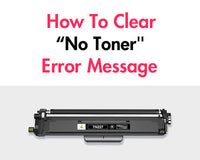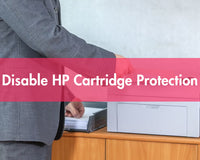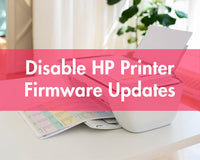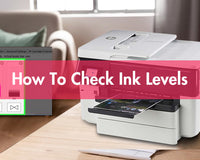With the continuous development of technology and the economy, 3D printing technology is becoming increasingly common in our lives. When using a 3D printer, it is inevitable to leave residues or stains on the 3D printer bed. Therefore, cleaning the 3D printer bed is a very important task. You need to clean it after each printing task. The correct cleaning steps will enable you to achieve the cleaning effect you expect. In this blog, we will introduce the main types of 3D printer beds, explore the importance of cleaning 3D printer beds and share specific cleaning steps.
Table of Contents:
Cleaning Glass Beds
Cleaning PEI Beds
Cleaning Aluminum Beds
Cleaning Flexible Magnetic Beds
Main Types of 3D Printer Bed
A 3D printing bed is a surface for 3D printing. This surface can be a built-in device of the printer itself, or it can be other auxiliary beds you add, such as movable glass plates, hard plastic sheets or masking tapes. The following are the main types of 3D printer beds.
- Glass Beds: The glass bed is one of the most popular 3D printer beds because it has a smooth surface, which is conducive to uniform printing. The glass bed is also easy to clean, making it ideal for those who print frequently.
- Polyetherimide (PEI) Beds: Polyetherimide (PEI) is a chemically stable thermoplastic that is used as a printing surface due to its good heat resistance and other material properties. PEI beds offer an excellent balance between adhesion and ease of removal. The surface does not require additional adhesive, and the prints usually stick well during the process.
- Aluminum Beds: Aluminum beds are common beds for 3D printers, usually using flat aluminum alloy bases. Many aluminium beds are equipped with heating elements (such as silicone pads) to stabilize heating and material adhesion.
- Flexible Magnetic Beds: Magnetic beds are becoming more and more popular due to their flexibility and convenience. They are often covered with specialized coatings that help the filament stick during printing and come off easily after printing.
| Types | Advantages | Disadvantages |
|---|---|---|
| Glass Beds | smooth surface, easy to clean, low cost |
fragile, adhesion Issues with certain filaments (ABS, etc.) |
| PEI Beds | great adhesion, easy to clean |
expensive, easily scratched by sharp objects |
| Aluminum Beds | even heat distribution, affordable prices |
require additional adhesives, prone to warping |
| Flexible Magnetic Beds | easy to remove prints, minimal adhesion issues | magnetic attenuation (due to long-term high temperature) |
Why the 3D Printer Bed Needs Cleaning
- Better Adhesion: A clean 3D printer bed can enable the printing material to adhere better to the surface of the bed, preventing the printed product from slipping or warping during the printing process.
- Ensure Excellent Printing Quality: Dirt, dust and residual filaments on the 3D printer bed can cause an uneven surface. This means the prints may not look how you want them.
- Less Trouble: Excessive stains on the bed can block the printer heads. This causes problems and may break the printer.
- Extend the Service Life of the Bed: Over time, debris will degrade the surface of the bed. Regular cleaning helps prevent the accumulation of debris, thereby extending the lifespan of the bed.
How to Clean 3D Printer Bed
According to what we have learned before, different types of beds have different characteristics. Therefore, although the steps for cleaning them are similar, there will be slight variations in the steps to achieve the best cleaning effect. Additionally, daily cleaning (cleaning after each print) and powerful cleaning (before first use or when there is excessive accumulation) will also differ slightly. The following are step-by-step instructions for cleaning various types of 3D printing machines.
Cleaning Glass Beds
1. Daily Cleaning:
a. Required Materials:
- Microfiber Cloth or Tissue
- Glass Cleaner
b. Steps:
- Turn off the printer and make sure the glass bed is completely cooled before cleaning to prevent the glass from cracking.
- When printing on a glass bed, most people choose to apply glue to the glass to ensure the stability of the printed product. Therefore, when cleaning a glass bed, a small amount of glass cleaner should be applied to the bed.
- Wipe the surface with a microfiber cloth or tissue.
Here is a video of the daily cleaning of glass beds:
2. Powerful Cleaning:
a. Required Materials:
- Plastic Spatula
- Isopropyl Alcohol (preferably 90% or higher)
- Microfiber Cloth or Tissue
b. Steps:
- Turn off the printer and let the bed cool down.
- Gently scrape off the excess filaments with a plastic scraper.
- Wipe the surface with a microfiber cloth or tissue soaked in isopropyl alcohol. This can remove grease, dust and filament residue.
- If there are stubborn spots, gently remove them with a plastic scraper.
- Use a clean and dry microfiber cloth to dry the surface.
Cleaning PEI Beds
1. Daily Cleaning:
a. Required Materials:
- A Bottle of Detergent
- Microfiber Cloth
- Compressed Air Duster (optional)
b. Steps:
- Wait for the PEI bed to cool to room temperature.
- Wipe the bed gently with a microfiber cloth containing detergent.
- Rinse the PEI bed under warm water.
- Wipe the surface of the bed with a dry microfiber cloth, being careful not to leave fingerprints on it.
- Use a compressed air duster (if available) to blow out debris from the gaps beside the bed.
Here is a video of the daily cleaning of PEI beds:
2. Powerful Cleaning:
a. Required Materials:
- Isopropyl Alcohol (70% - 90%)
- Lint-Free Cloth
- Plastic Spatula (with rounded edges)
b. Steps:
- Turn off the printer and let the PEI bed cool down completely.
- Use a circular plastic spatula to scrape off stubborn filament residues gently. Keep the spatula at a 45°angle to avoid damaging the coating.
- Soak a small amount of IPA in a lint-free cloth and then wipe the dirty area in a circular motion.
- Immediately wipe the area again with a dry lint-free cloth to ensure that there is no IPA residue on the PEI surface.
- Let the bed dry for 1-2 minutes before the next print.
Cleaning Aluminum Beds
1. Daily Cleaning:
a. Required Materials:
- Microfiber Cloth
- Soft Plastic Scraper
- Compressed Air Duster (optional)
b. Steps:
- Turn off the printer and make sure the aluminum bed is completely cooled.
- Use a soft plastic scraper to remove the loose filaments gently.
- Wipe the entire bed with a dry microfiber cloth.
- Use a compressed air duster (if available) to clean the gap between the bed and its stand.
2. Powerful Cleaning:
a. Required Materials:
- Isopropyl Alcohol (90%)
- Microfiber Cloth
- Non-Abrasive Sponge
- Soft Plastic Scraper
b. Steps:
- Turn off the printer and make sure the aluminum bed is completely cooled.
- Scrape off the residue with a soft plastic scraper.
- Wet a microfiber cloth with IPA and wipe the bed to remove oil, fingerprints or residual glue.
- For stubborn residues, you can use a non-abrasive sponge dipped in IPA to wipe them in a circular motion.
- Wipe the entire bed with a dry microfiber cloth.
Cleaning Flexible Magnetic Beds
1. Daily Cleaning:
a. Required Materials:
- Soft Brush
- Lint-Free Cloth
b. Steps:
- Turn off the printer and allow the magnetic flexible bed to cool to room temperature.
- Gently peel the flexible bed from the magnetic base.
- Use a soft brush to sweep away loose filament debris on the front (printing side) and back (magnetic side).
- Wipe the front with a dry lint-free cloth. For slight residue, gently bend the bed to let the filament pop out.
- Reinstall the flexible bed onto the magnetic base, ensuring it is flat and free of wrinkles.
2. Powerful Cleaning:
a. Required Materials:
- Isopropyl Alcohol (70%)
- Lint-Free Cloth
- Soft Plastic Scraper
- Mild Soap
b. Steps:
- Turn off the printer and allow the magnetic flexible bed to cool to room temperature.
- Gently peel the flexible bed from the magnetic base.
- Use a soft plastic scraper to remove the sticky residue.
- Dampen a lint-free cloth with IPA and wipe the dirty area.
- For oil stains, wet the lint-free cloth with soapy water and then gently wipe.
- Wipe the entire bed with a dry lint-free cloth to ensure there is no moisture left.
- Reinstall the bed onto the magnetic base.
Precautions During the Cleaning Process
- Before most cleaning operations start, you need to turn off the 3D printer and let the 3D printer bed cool to room temperature. This can not only avoid burns but also prevent damage to the 3D printer bed.
- If temporary heating is needed during the cleaning process, you need to stand by and observe. The temperature should not be too high and the heating time does not need to be too long. As long as the remaining stains start to soften, you can stop heating.
- During the cleaning process, hard tools such as scrapers, wire brushes, sandpaper, etc. should be avoided for cleaning. The surfaces of many 3D printer beds are quite fragile, and hard objects can easily damage the surface of the bed.Using tools such as plastic rounded corner scrapers, soft-bristled brushes, and lint-free cloths for cleaning is the most appropriate choice.
- Do not mix IPA with glass cleaners or the like. Different solvents may undergo chemical reactions, thereby generating corrosive substances that can damage the bed surface.
FAQs about Cleaning a 3D Printer Bed
1. Could it be possible only to carry out powerful cleaning regularly?
The answer is no. Powerful cleaning can quickly remove residues. However, some powerful cleaning operations involve the addition of chemical reagents. If the cleaning of chemical reagents is not carried out properly in the end, it will have a certain impact on your printer bed over time. Therefore, daily cleaning operations cannot be omitted. Powerful cleaning can only be used when daily cleaning is ineffective.
2. How to remove stuck filament from the 3D printer bed?
- If there are stuck filaments on your 3D printer bed that are difficult to handle through daily cleaning, then you can choose powerful cleaning.
- If you do not want to use chemical solvents such as IPA for treatment, you can choose to start the printer, heat it to 50 to 70 degrees. The stuck filament will gradually melt, and then you can use a scraper to remove the filament gently.
3. Can I use a household towel to wipe the 3D printer bed?
Whether you can use a household towel to clean the print bed of a 3D printer depends on the material of the towel. Do not use rough towels as they may damage the surface of the print bed. If the towel does not shed debris, it can be used to clean the print bed of a 3D printer. However, it is still best to use a dedicated microfiber cloth.
Conclusion
A clean 3D printer bed can extend the service life of the printer and also bring you 3D printed products that meet your expectations. As long as the correct steps are followed, the 3D printer bed can be properly cleaned. If you do a good job of daily cleaning after each print, you may not need to carry out powerful cleaning, which can avoid the possible damage that chemical solvents may cause to the 3D printer bed.
You May Also Want to Know:












